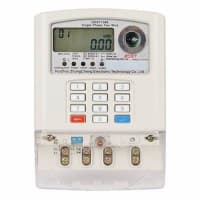Semiconductors are divided into: intrinsic semiconductors and impurity semiconductors. An intrinsic semiconductor is a semiconductor that is pure and contains no impurities. An impurity semiconductor refers to a semiconductor containing impurities. What we usually mean by semiconductors is impurity semiconductors.
The structural characteristics of semiconductors are covalent bonds. Covalent bonds have a strong binding force, allowing atoms to be regularly arranged to form crystals.
Intrinsic semiconductors are composed of semiconductor silicon and germanium, and their outermost electrons (valence electrons) are four. In silicon and germanium crystals, atoms form a crystal lattice according to a tetragonal system. Each atom is located at the center of a regular tetrahedron, while four other atoms are located at the apex of the tetrahedron. Each atom is formed between the atoms adjacent to it Covalent bond, sharing a pair of valence electrons.
The two electrons in the covalent bond are tightly bound in the covalent bond, which is called a bound electron. At room temperature, it is difficult for bound electrons to escape from covalent bonds and become free electrons. There are very few free electrons in intrinsic semiconductors, so the intrinsic semiconductors have very poor electrical conductivity.
When T=0K and no external excitation, the valence electrons are completely bound by covalent bonds. There are no movable charged particles in the intrinsic semiconductor, and its conductivity is 0, which is equivalent to an insulator. At room temperature, due to thermal excitation, some valence electrons get enough energy to escape from the covalent bond and become free electrons. At the same time, a vacancy is left on the covalent bond, which is called a hole. The higher the temperature, the higher the carrier concentration.
In intrinsic semiconductors, there are two types of carriers, namely free electrons and holes, and one electron has one hole.
Under the action of an external electric field, holes attract nearby electrons to fill them. This result is equivalent to the migration of holes, and the migration of holes is equivalent to the movement of positive charges. Therefore, holes can be considered as carriers.
In an intrinsic semiconductor, the current consists of a current generated by free electron movement and a current generated by hole movement. Its conductivity depends on the concentration of carriers. Due to the low carrier concentration, the conductivity is generally poor. However, the carrier concentration depends on the temperature. The higher the temperature, the higher the carrier concentration, and the stronger the conductivity of the intrinsic semiconductor.
Impurity semiconductors are divided into N-type semiconductors and P-type semiconductors. Semiconductors doped with certain trace elements in the intrinsic semiconductor are called intrinsic semiconductors. N-type semiconductor refers to a semiconductor doped with a pentavalent impurity element such as phosphorus, and the free electron concentration is greatly increased. P-type semiconductor refers to a semiconductor doped with a trivalent impurity element (such as boron), and an impurity semiconductor having a greatly increased hole concentration.
In N-type semiconductors, free electrons are majority carriers, which are mainly provided by impurity atoms; holes are minority carriers, which are formed by thermal excitation. Pentavalent impurity atoms that provide free electrons become positive ions because they are positively charged, so pentavalent impurity atoms are also called donor impurities. In P-type semiconductors, holes are majority carriers, which are mainly formed by doping; free electrons are minority carriers, which are formed by thermal excitation. Holes can easily trap electrons, making impurity atoms negative ions. Trivalent impurities are therefore also called acceptor impurities.
On the same semiconductor substrate, P-type semiconductors and N-type semiconductors are separately manufactured. After the carrier diffusion, a PN junction is formed at their interface. In the space-charge region, due to the lack of multiples, it is also called a depletion layer. When the applied voltage causes the potential of the P region in the PN junction to be higher than the potential of the N region, it is called plus forward voltage, referred to as forward bias; otherwise it is called plus reverse voltage, referred to as reverse bias.
When the forward voltage is applied to the PN junction:
1.Low resistance
Large forward diffusion current
When reverse voltage is applied to the PN junction:
High resistance
Very small reverse drift current
Unidirectional conductivity of PN junction:
When the reverse voltage of the PN junction increases to a certain value, the reverse current suddenly increases rapidly. This phenomenon is called reverse breakdown of the PN junction. Thermal breakdown is irreversible. Both Zener breakdown and avalanche breakdown are electrical breakdowns, which are reversible.
RGB LED Diode parameters:
1. The maximum rectified current IF refers to the maximum forward average current allowed to flow through the diode when it is used for a long time.
2. The reverse breakdown voltage VBR and the maximum reverse working voltage VRM refer to the voltage value when the diode reverse breakdown. The reverse current increases sharply during breakdown, and the unidirectional conductivity of the diode is destroyed or even overheated and burned out.
3. The reverse current IR is the reverse current when the diode plus reverse peak working voltage. The large reverse current indicates that the tube has poor unidirectional conductivity, so the smaller the reverse current, the better. Reverse current is affected by temperature. The higher the temperature, the greater the reverse current.
4. Forward voltage drop VF
5.Capacitor CB or maximum working frequency
最新の画像[もっと見る]
-
 Việc bảo quản tem nhãn decal cần phải chú ý những gì?
5年前
Việc bảo quản tem nhãn decal cần phải chú ý những gì?
5年前
-
 Boat Winch
7年前
Boat Winch
7年前
-
 How to keep your Police Badge well?
7年前
How to keep your Police Badge well?
7年前
-
 SINGLE-PHASE KEYPAD PREPAID ENERGY METER DDSY1398
8年前
SINGLE-PHASE KEYPAD PREPAID ENERGY METER DDSY1398
8年前
-
 JIAN-Acrylic Medal with Exquisite Metal Frame
8年前
JIAN-Acrylic Medal with Exquisite Metal Frame
8年前
-
 Rayidea™ Implanted RFID Animal Tag (P/N: RI-GLA002)
8年前
Rayidea™ Implanted RFID Animal Tag (P/N: RI-GLA002)
8年前
-
 Rayidea™ Implanted RFID Animal Tag (P/N: RI-GLA002)
8年前
Rayidea™ Implanted RFID Animal Tag (P/N: RI-GLA002)
8年前
-
 6 top women’s description gift boxes
8年前
6 top women’s description gift boxes
8年前
-
 "Internet +" to create green cardboard boxes
8年前
"Internet +" to create green cardboard boxes
8年前
-
 Application for 3D laser engraving
8年前
Application for 3D laser engraving
8年前










※コメント投稿者のブログIDはブログ作成者のみに通知されます